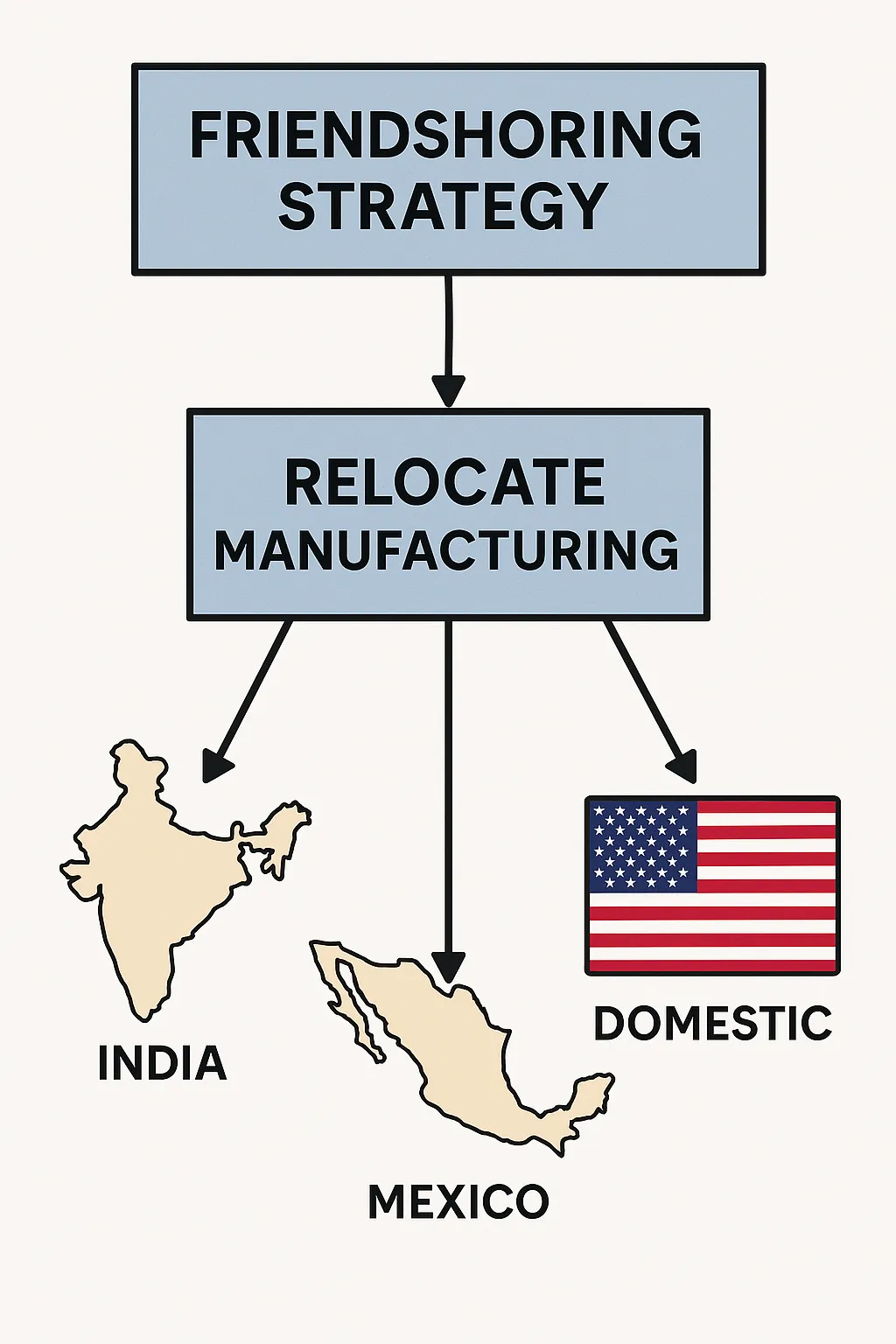At a Crossroads: Vietnam 2025 U.S. Tariffs and Global Strategy
Vietnam’s rise as a manufacturing hub has been one of Southeast Asia’s most compelling success stories. Over the past two decades, it has leveraged its strategic geography—positioned between China and the United States—to benefit from the U.S.-China trade war and shifting global supply chains.
But the Vietnam 2025 U.S. tariffs, announced by the Trump administration at a stunning 46%, mark a sharp turn in the country’s economic trajectory.
Paired with a 49% tariff on Cambodia, this move signals a broader shift in regional trade relations and poses a critical test for Vietnam’s trade policy and long-term economic strategy. The U.S. tariffs impact may reverberate beyond exports—challenging Vietnam’s role in global manufacturing and forcing a recalibration of its geopolitical positioning.
This tariff shift is not just about economics—it signals a broader geopolitical strategy with far-reaching consequences for Southeast Asia. In this post, we’ll explore the immediate and long-term implications of these tariffs, Vietnam’s strategic options, and what businesses and investors should be watching for in the coming months.
The Immediate Impact of the U.S. Tariffs on Vietnam
The new tariffs, primarily designed to close loopholes in the U.S. trade system, target goods entering the U.S. market through intermediary countries like Vietnam and Cambodia. These countries have long been used as trading hubs, with Chinese-made products being rerouted to avoid U.S. tariffs.
Vietnam, heavily reliant on its export-driven economy, will feel the effects of these tariffs, especially in sectors like electronics, textiles, and furniture. With major international companies such as Samsung, Nike, and Adidas relying on Vietnamese manufacturing, the new tariffs could drive up the cost of goods, especially in industries dependent on low-cost labor.
Key Industries Affected:
- Electronics: With giants like Samsung and LG manufacturing in Vietnam, the tariffs could raise prices for U.S. consumers and reduce the competitiveness of Vietnamese exports.
- Apparel & Textiles: Vietnam is a top supplier of clothing and textiles to the U.S. This sector will likely experience a significant impact from the tariff increase.
- Furniture: As a major low-cost producer, Vietnam’s furniture exports could see a sharp decline as production shifts to other countries or markets.
Vietnam’s Geopolitical Dilemma: China or the U.S.?
The new tariffs present a dilemma for Vietnam: should it deepen its economic ties with China or strengthen its relations with the U.S.?
Vietnam’s historical and economic ties with China are undeniable. China is Vietnam’s largest trading partner, and their relationship continues to grow, especially in industries like electronics, agriculture, and textiles.
The new tariffs could lead Vietnam to align more closely with China, particularly as part of China’s Belt and Road Initiative (BRI), strengthening their economic and geopolitical partnership.
Conversely, the U.S. has been a long-time ally and a key investor in Vietnam, offering access to advanced technologies and capital. Strengthening ties with the U.S. could secure better trade terms, increase foreign investment, and deepen Vietnam’s international market reach.
However, this would require closing trade loopholes and ensuring compliance with U.S. laws, which might lead to a reevaluation of existing trade relationships.
Vietnam’s Path Forward: Navigating Between Two Giants
In the short term, Vietnam is likely to pursue a balanced approach, maintaining its economic ties with both China and the U.S. While this strategy might involve diversifying trade agreements and deepening regional relationships, Vietnam may ultimately need to make more definitive choices in the future.
Strategic Options for Vietnam:
- Strengthen Ties with the U.S.: By increasing transparency, tightening regulations, and aligning with U.S. trade policies, Vietnam could secure more favorable trade terms and access to advanced technologies.
- Double Down on China: As China remains Vietnam’s largest trading partner, Vietnam may seek to solidify this relationship further, potentially securing more investments in infrastructure and favorable trade terms.
- Regional Partnerships: With the signing of the Regional Comprehensive Economic Partnership (RCEP), Vietnam has an opportunity to deepen ties with other Southeast Asian countries and regional powers like Japan and South Korea.
What’s at Stake for Vietnam’s Future?
In the short term, Vietnam’s economy will likely experience increased volatility. A slowdown in exports to the U.S. could lead to reduced growth rates, potential layoffs in key industries like electronics and apparel, and a noticeable dip in investor confidence. The market has already reacted sharply, with the Vietnamese stock index experiencing a significant decline.
However, in the long run, Vietnam’s strategic positioning—combined with a growing high-tech sector, including semiconductors and clean energy—could offer new avenues for economic growth. As the country continues to develop its digital infrastructure and tech workforce, it could mitigate the impact of tariffs and reduce its dependence on traditional manufacturing sectors.
Investor Perspective: What Should Investors Watch For?
Investors should be prepared for short-term market volatility, as the announcement of these tariffs has already caused noticeable shifts in stock indices. However, the true impact may take time to unfold. Vietnam’s future economic trajectory will depend on how the government responds to these tariffs and its ability to diversify its export markets.
Key Areas to Watch:
- Government Policy: Watch for announcements on trade policies, investment incentives, and manufacturing reforms that could help stabilize Vietnam’s key industries.
- Trade Relations: Monitor how Vietnam navigates its relationships with China and the U.S. and whether it can successfully manage the geopolitical tensions between the two.
- Industry Shifts: Keep an eye on emerging sectors like semiconductors, clean energy, and digital services, which could play a crucial role in Vietnam’s long-term growth.
The Bigger Picture: The Future of Global Trade
These tariff changes mark a pivotal moment in the global trade landscape. Countries like Vietnam, situated strategically between two of the world’s largest economies, will play a crucial role in shaping the future of international trade. As U.S.-China tensions continue to rise, Vietnam’s ability to navigate this complex geopolitical environment will determine its economic fate in the years to come.
Vietnam’s strategic positioning—whether it aligns more closely with China, the U.S., or seeks a more balanced approach—will be key in shaping its future economic prosperity.
Want to stay ahead of these developments and get exclusive insights on Vietnam’s economic future?
- Support independent analysis by subscribing to Vietnam Insight Digest on Patreon.
- Access detailed reports and exclusive guides on Gumroad.
- Read the full article on Medium: The U.S. Tariff Shift: A Turning Point for Vietnam’s Economy.
By staying informed, you’ll be better positioned to navigate the future of Vietnam’s economy and its role in global trade.








